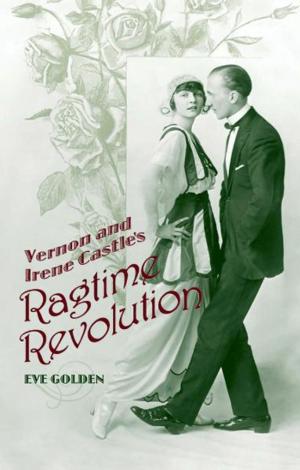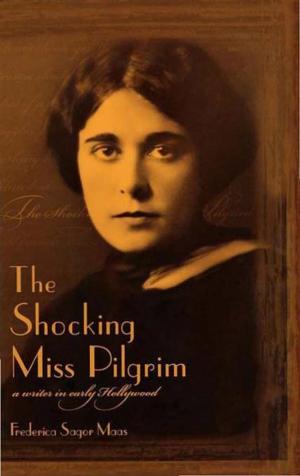Stereoscopic Cinema and the Origins of 3-D Film, 1838-1952
Nonfiction, Entertainment, Film, Direction & Production, Performing Arts, Science & Nature, Technology| Author: | Ray Zone | ISBN: | 9780813145907 |
| Publisher: | The University Press of Kentucky | Publication: | January 29, 2014 |
| Imprint: | The University Press of Kentucky | Language: | English |
| Author: | Ray Zone |
| ISBN: | 9780813145907 |
| Publisher: | The University Press of Kentucky |
| Publication: | January 29, 2014 |
| Imprint: | The University Press of Kentucky |
| Language: | English |
From stereoview cards to large-format IMAX films, 3-D technology's heightened realism and powerful visual allure have held audiences captive for over a century and a half. The technology, known as stereoscopy, creates an illusion of depth by presenting two slightly different images to the eye in print or on-screen. The advent of stereoscopic film technology excited both filmmakers and audiences, as a means of replicating all of the sounds, colors, movement, and dimensionality of life and nature for the first time. The origins of 3-D film are often linked with a proliferation of stereoscopic films in the 1950s. By the time films like Man in the Dark and House of Wax was attracting large crowds, however, the technology behind this form of filmmaking was already over a century old. Stereoscopic Cinema and the Origins of 3-D Film, 1838--1952, examines this "novelty period" of stereoscopic film, charting its progression from Charles Wheatstone's 1938 discovery of 3-D to the 1952 release of Arch Oboler's innovative film, Bwana Devil. Stereoscopic specialist Ray Zone argues that the development of stereoscopic film can best be understood through a historical analysis of the technology rather than of its inventors. Zone examines the products used to create stereoscopic images, noting such milestones as David Brewster's and Oliver Wendell Holmes's work with stereoscopes, the use of polarizing image selection, and the success of twin-strip 3-D films, among others. In addition, Zone looks at the films produced up to 1952, discussing public reception of early 3-D short films as well as longer features such as Power of Love in single-strip anaglyphic projection in 1922 and Semyon Ivanov's 1941 autostereoscope Robinson Crusoe. He integrates his examination of the evolution of 3-D film with other cinematic developments, demonstrating the connection between stereoscopic motion pictures and modern film production. Stereoscopic Cinema and the Origins of 3-D Film, 1838--1952, is an exhaustive study of not only the evolution of 3-D technology and the subsequent filmmaking achievements but also the public response to and cultural impact of 3-D movies. Zone takes the reader on a voyage of discovery into the rich history of a field that predates photography and that continues to influence television and computer animation today.
From stereoview cards to large-format IMAX films, 3-D technology's heightened realism and powerful visual allure have held audiences captive for over a century and a half. The technology, known as stereoscopy, creates an illusion of depth by presenting two slightly different images to the eye in print or on-screen. The advent of stereoscopic film technology excited both filmmakers and audiences, as a means of replicating all of the sounds, colors, movement, and dimensionality of life and nature for the first time. The origins of 3-D film are often linked with a proliferation of stereoscopic films in the 1950s. By the time films like Man in the Dark and House of Wax was attracting large crowds, however, the technology behind this form of filmmaking was already over a century old. Stereoscopic Cinema and the Origins of 3-D Film, 1838--1952, examines this "novelty period" of stereoscopic film, charting its progression from Charles Wheatstone's 1938 discovery of 3-D to the 1952 release of Arch Oboler's innovative film, Bwana Devil. Stereoscopic specialist Ray Zone argues that the development of stereoscopic film can best be understood through a historical analysis of the technology rather than of its inventors. Zone examines the products used to create stereoscopic images, noting such milestones as David Brewster's and Oliver Wendell Holmes's work with stereoscopes, the use of polarizing image selection, and the success of twin-strip 3-D films, among others. In addition, Zone looks at the films produced up to 1952, discussing public reception of early 3-D short films as well as longer features such as Power of Love in single-strip anaglyphic projection in 1922 and Semyon Ivanov's 1941 autostereoscope Robinson Crusoe. He integrates his examination of the evolution of 3-D film with other cinematic developments, demonstrating the connection between stereoscopic motion pictures and modern film production. Stereoscopic Cinema and the Origins of 3-D Film, 1838--1952, is an exhaustive study of not only the evolution of 3-D technology and the subsequent filmmaking achievements but also the public response to and cultural impact of 3-D movies. Zone takes the reader on a voyage of discovery into the rich history of a field that predates photography and that continues to influence television and computer animation today.















